As a second generation Italian-American, I grew up eating a lot of Italian food. I’ve also been to Italy eight times and can tell you that all those dishes you know and love from your favorite local Italian food restaurant aren’t actually from Italy. Americans have taken Italian concepts and made them bigger, cheesier, meatier and more convenient. That part shouldn’t really come as surprise, it’s what we do here, right? But seeing some of your favorites in this list may feel like a sucker punch to the gut. In a delicious way of course.

Baked Ziti
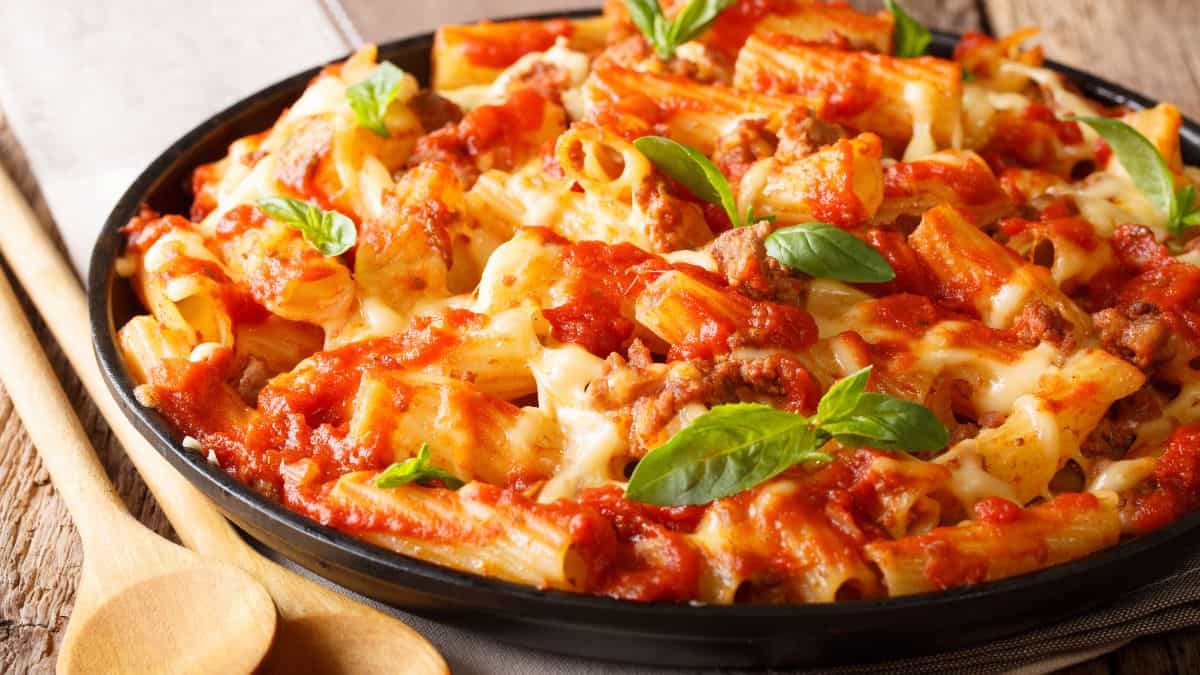
Baked Ziti is the cozy casserole dream that Italy never had. This comforting dish, with its layers of ziti pasta, cheese, and meat sauce, was born in the kitchens of Italian-American immigrants seeking a piece of home with a convenient twist. In Italy, baked pasta exists, usually called “pasta forno” but rarely takes this form; instead, Italians favor baked lasagna or cannelloni, focusing on a more delicate balance of ingredients and flavors.
Spaghetti & Meatballs
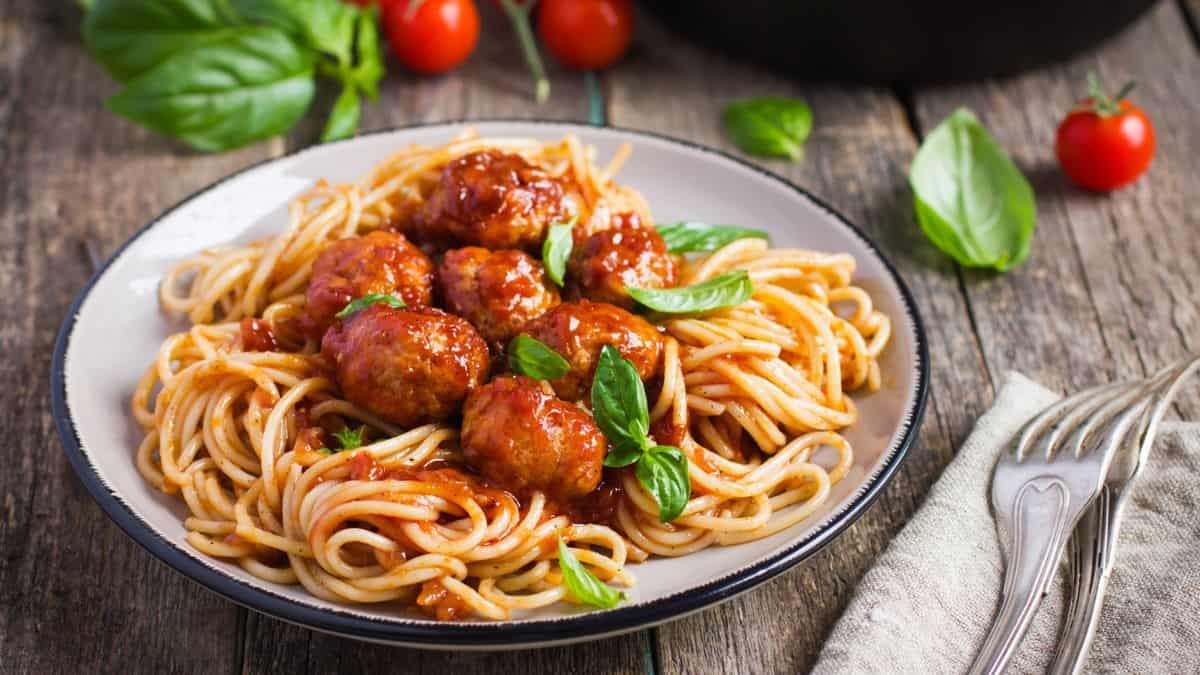
Spaghetti & Meatballs might be the poster child of Italian-American cuisine, but in Italy, this combo is a mismatch. The dish evolved from Italian immigrants in America scaling up meatball sizes and pairing them with spaghetti as a filling, affordable meal. Back in Italy, meatballs (polpette) are typically smaller, served on their own, or in soups—not with pasta.
Chicken Parmesan
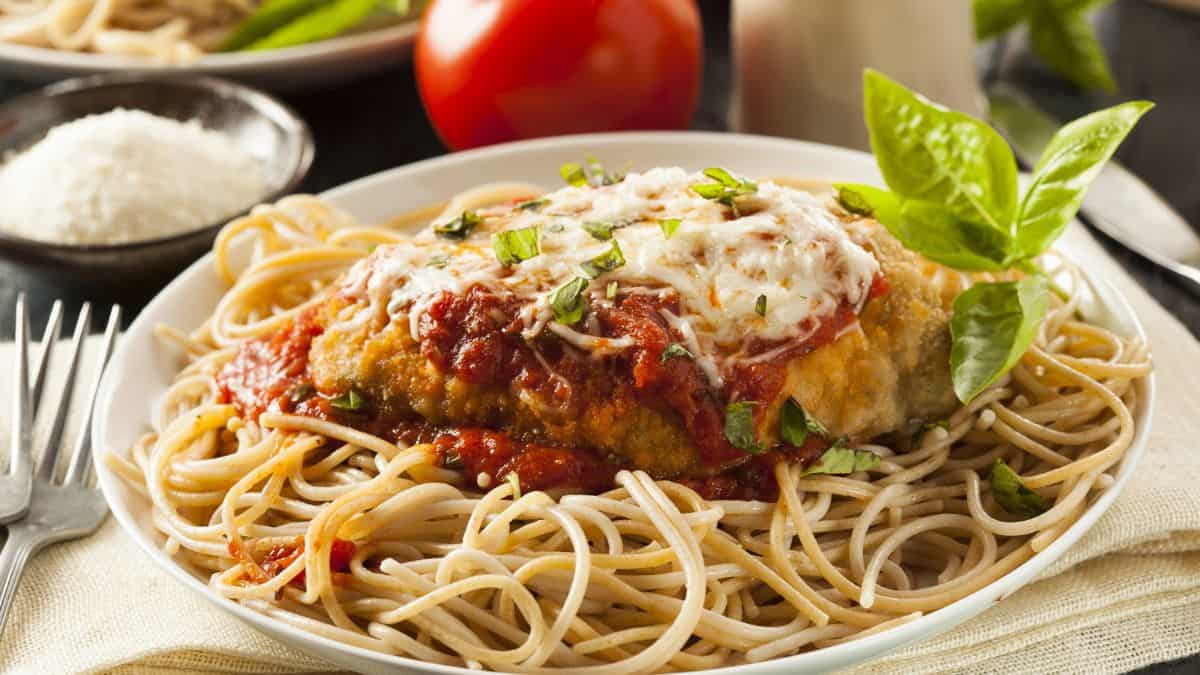
Chicken Parmesan, a staple on every Italian-American restaurant menu, is virtually nonexistent in Italy. This dish, featuring breaded chicken covered in cheese and tomato sauce, is an American twist on Eggplant Parmigiana from southern Italy. Italians love their parmigiana with eggplant, not chicken, mostly because poultry wasn’t as popular in Italy.
Garlic Bread
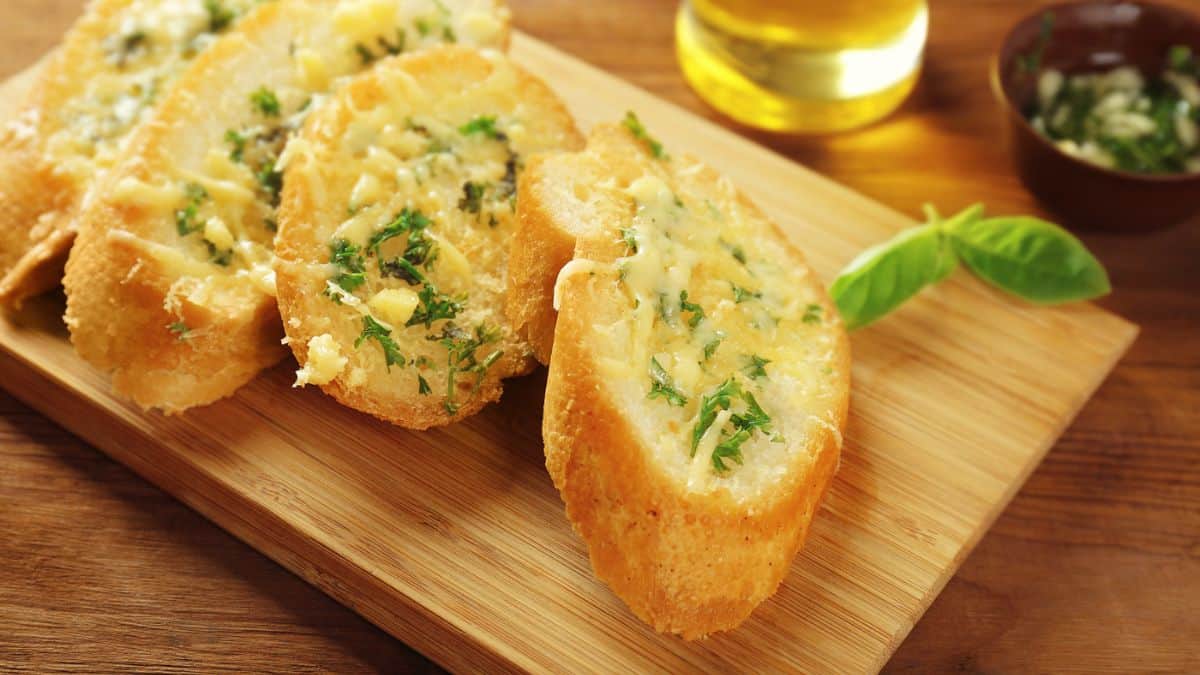
With its buttery, garlicky goodness, garlic bread is an American creation that Italians might find perplexing. In Italy, garlic is used more sparingly and traditionally rubbed onto slices of grilled bread to make bruschetta. The American version amps up the garlic and adds heaps of butter and cheese (does this really surprise anyone?), transforming a simple starter into a decadent side.
Rainbow Cookies

Those colorful layers of almond cake sandwiched with jam and coated in chocolate were the best part of my childhood. They’re also more American fantasy than Italian tradition. Though they mimic the colors of the Italian flag and were created by Italians who immigrated to America, you’d be hard-pressed to find them in Italy. Italians prefer their cookies less sweet, favoring almond biscuits like amaretti or pignoli.
Italian Salad Dressing

With its zesty blend of herbs, vinegar, and oil, is a far cry from what you’d find in a traditional Italian insalata. In Italy, salads are typically dressed with a simple splash of extra virgin olive oil and balsamic vinegar or lemon juice—no bottled dressings in sight. The American version is a convenience that most of the time doesn’t even use real olive oil. Italians would likely pass over this adaptation for the real deal.
Spaghetti Bolognese
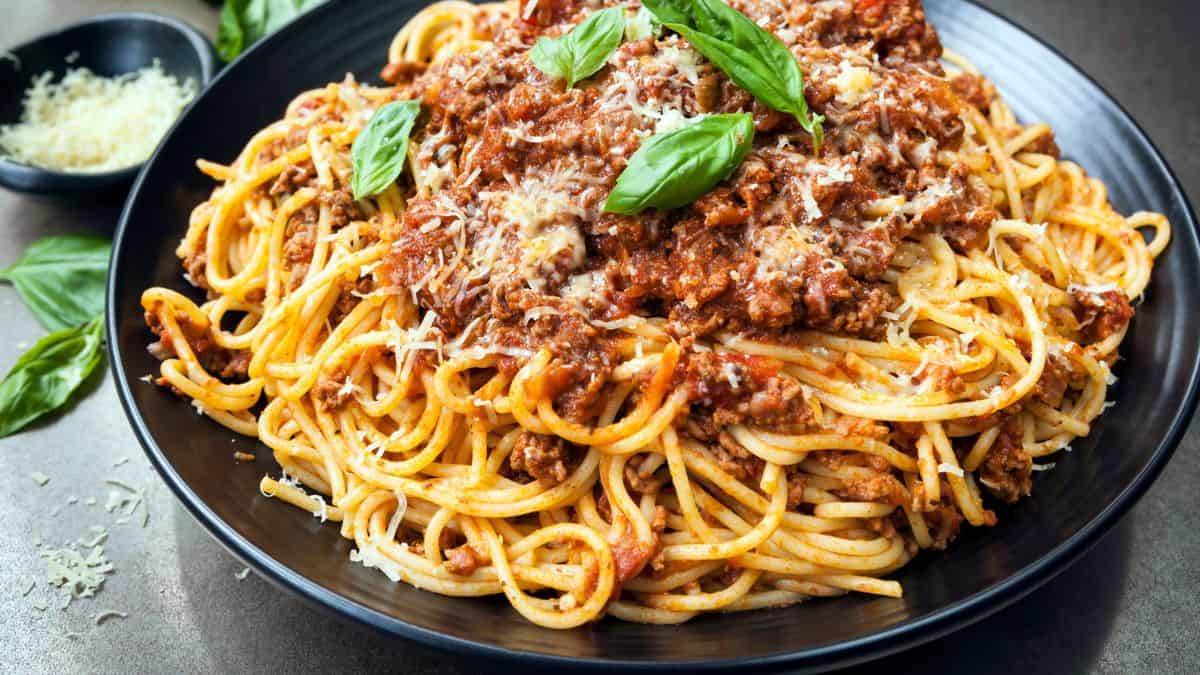
Spaghetti Bolognese is the dish many Americans associate with Italian cuisine, yet it’s a dish that doesn’t actually exist in Italy. In Bologna, the closest relative is tagliatelle al ragù: a slow-cooked sauce of meat, tomato, and soffritto served with broad, flat pasta, not spaghetti. The American version simplifies and alters the authentic, rich flavor of its Italian counterpart.
Fettuccine Alfredo
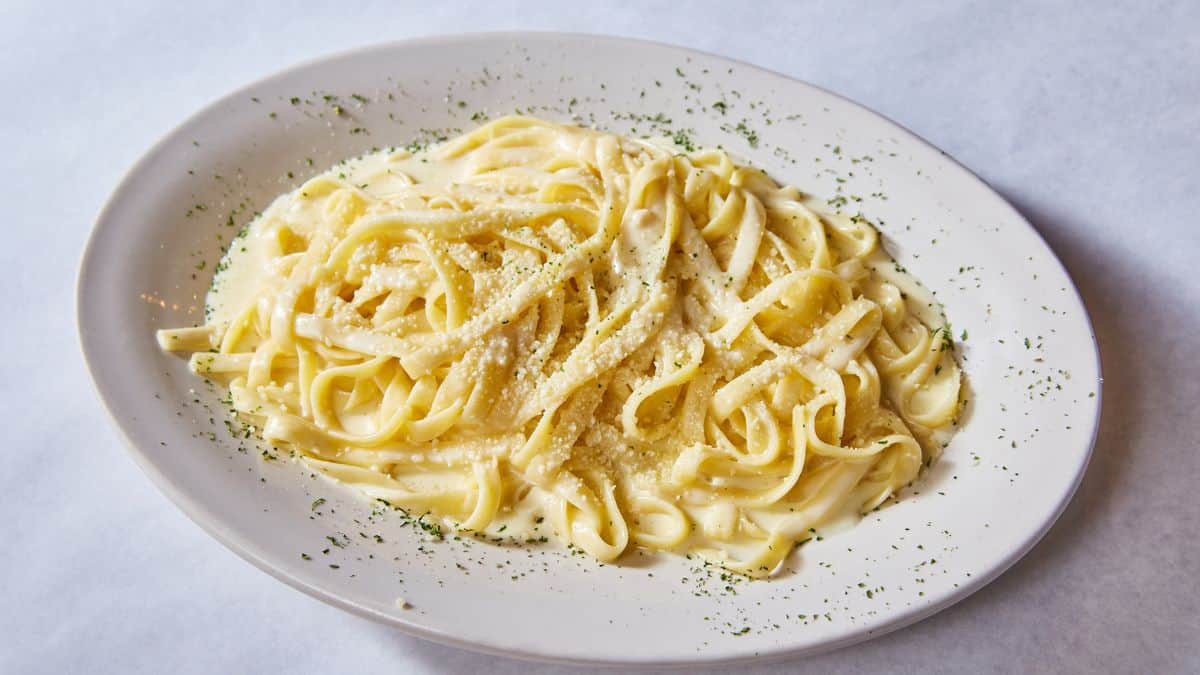
This dish is a staple on any Italian restuarant in America. It’s creamy, comforting, and completely American. This dish was created by Alfredo di Lelio in Rome but was altered and popularized in the States to suit American tastes for creamier, heavier sauces. In Italy, a lighter version exists, often just butter and Parmigiano-Reggiano, known simply as pasta al burro.
Pepperoni Pizza
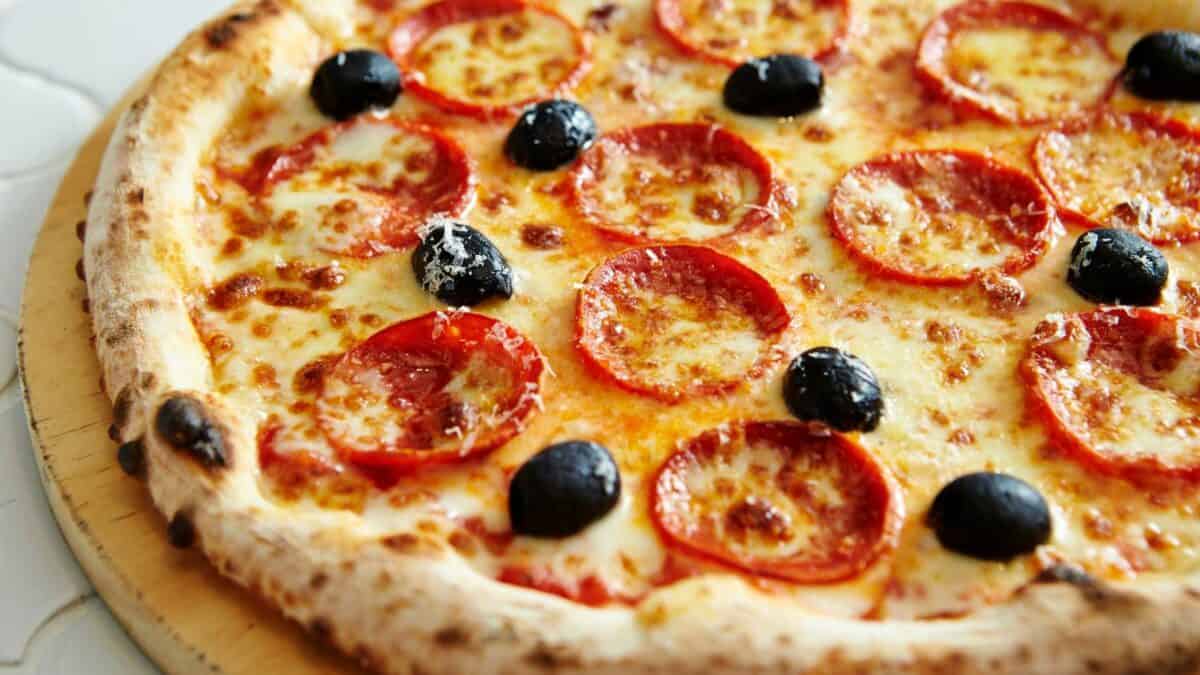
America’s beloved spicy and greasy delight, is a product of American ingenuity. In Italy, pepperoni refers to bell peppers, not salami. The closest Italian equivalent would be pizza con salame piccante, featuring thinly sliced spicy salami, but it’s the unique American pepperoni that steals the heart of pizza lovers in the U.S.
Muffuletta
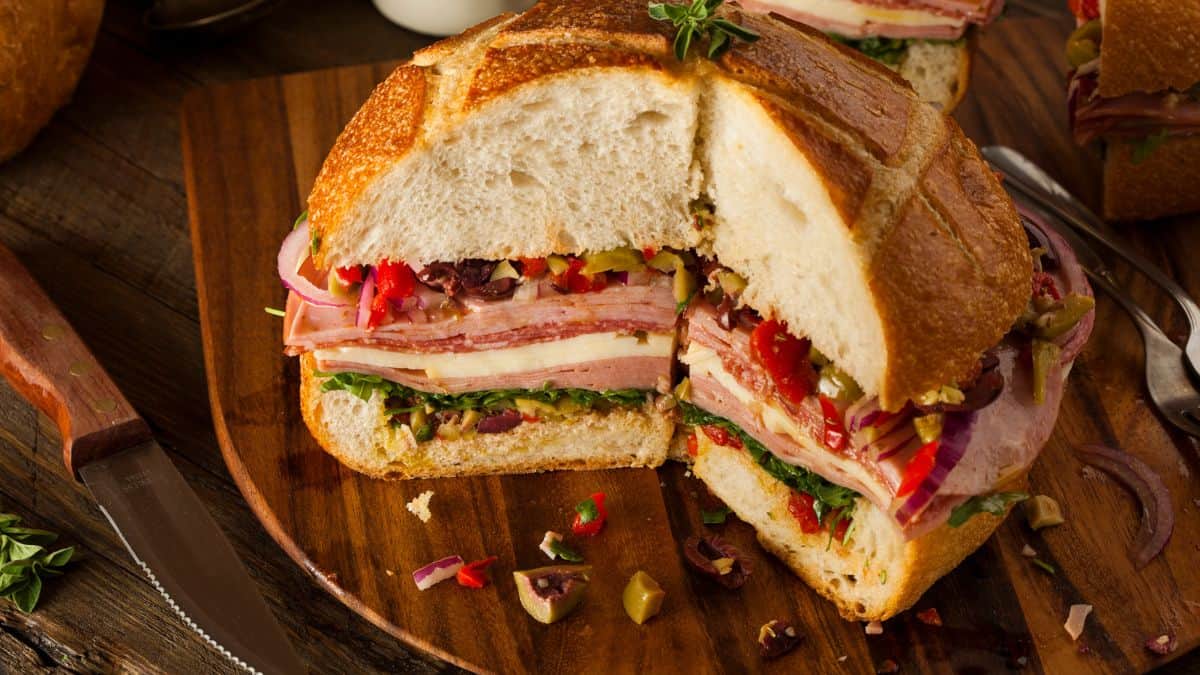
This hefty sandwich packed with cured meats, cheese, and olive salad, originated among Italian immigrants in New Orleans. While Italy has its share of wonderful sandwiches, the Muffuletta’s specific combination and especially its signature olive salad is a unique creation that you’d be hard-pressed to find in Italy.
Sunday Sauce
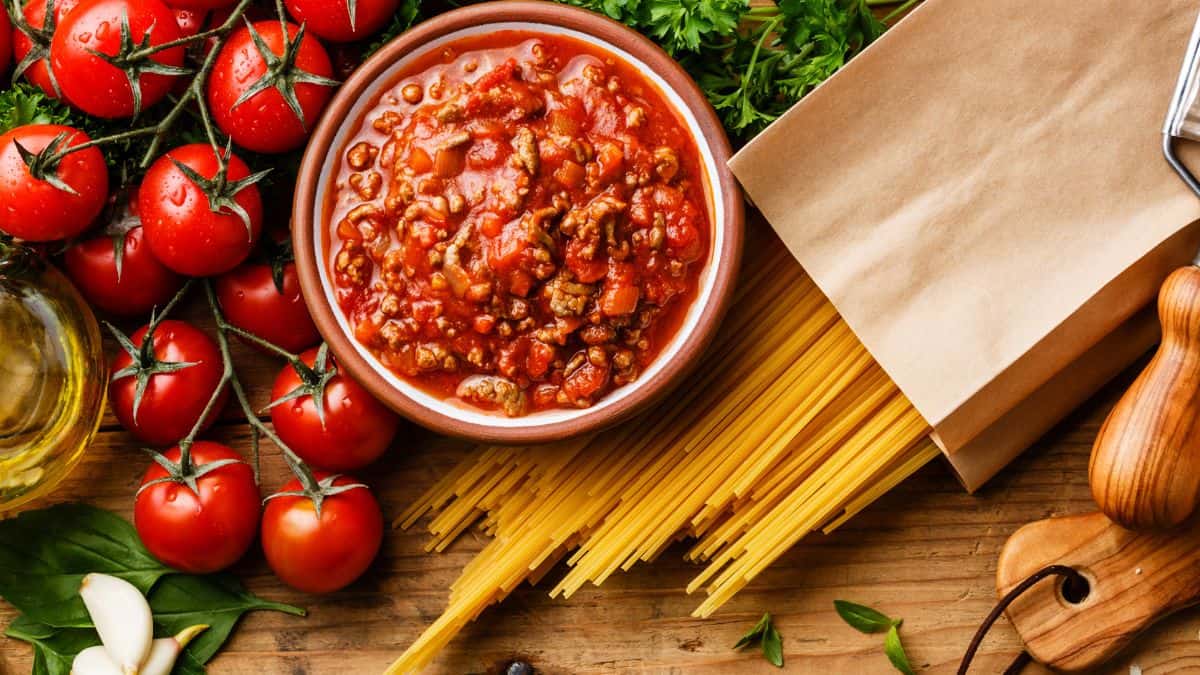
In Italy, cooking meat in tomato sauce typically means the sauce goes with pasta as a first course, and the meat is eaten separately as a main dish. However, the tradition of Sunday Sauce, where meat and sauce come together in a hearty meal served over pasta, is purely an American innovation and a long-standing, deeply entrenched one in that would likely erupt in an argument if trying to convince any Italian-American family.
What’s Fact? What’s Fiction? The Real Scoop On 13 Aphrodisiac Foods
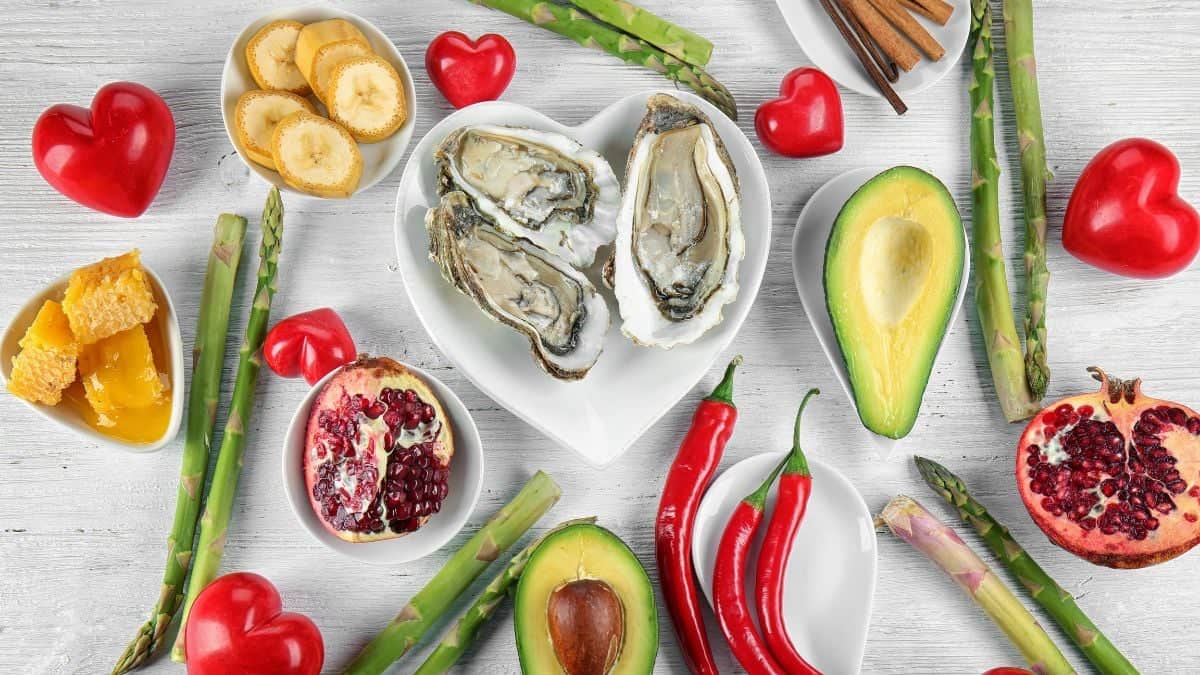
Ever noticed how some foods, like oysters and chocolate, get all the credit for sparking romance, while others barely get a mention? We’re shining a light on the whole aphrodisiac menu, from headliners to the lesser-known foods and supplements out there. Some might not be as well known, but actually come with a bit of scientific backing for their libido-boosting effects.
This list is split into two: the myths and the maybe’s. On one side, we have foods celebrated through the ages more for their symbolic meanings or suggestive shapes than any proven effects. On the other, there are those with a handful of studies suggesting they might actually do something to get the sparks flying. Once you know the difference you can decide which ones you might want on your plate.
Read More Here: What’s Fact? What’s Fiction? The Real Scoop On 13 Aphrodisiac Foods
11 Simple Snacks for Better Blood Sugar Control

Keeping your blood sugar in check doesn’t mean you have to skimp on snacking. In fact, the right snacks can be your secret weapon in maintaining those levels while still satisfying those mid-day cravings. Pairing up the good stuff—fiber, proteins, and healthy fats—can help to keep blood sugar steady. These snack ideas are as delicious as they are smart for your health.
See Them Here: 11 Simple Snacks for Better Blood Sugar Control
Avoid these 11 Foods If You’re Sensitive to Lectins

Navigating the world of food sensitivities can feel like walking through a minefield, especially when lectins are the culprits. You might have heard that these protein-packed particles can wreak havoc on sensitive stomachs, but figuring out where they’re hiding is another story. We’re breaking down some of the foods that are lectin landmines for those with sensitivities. Grab a notepad, because you’re going to want to remember these tips next time you’re grocery shopping or planning a meal.
See Them Here: Avoid these 11 Foods If You’re Sensitive to Lectins
Select images provided by Depositphotos.
Gina Matsoukas is an AP syndicated writer. She is the founder, photographer and recipe developer of Running to the Kitchen — a food website focused on providing healthy, wholesome recipes using fresh and seasonal ingredients. Her work has been featured in numerous media outlets both digital and print, including MSN, Huffington post, Buzzfeed, Women’s Health and Food Network.








